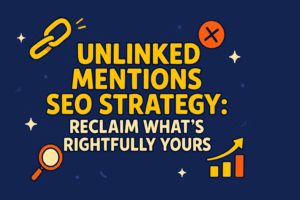
A solid online presence is critical for businesses and individuals in today’s digital age. Search engine optimization (SEO) is a crucial component of building and maintaining that online presence, and backlinks are essential to SEO. However, not all backlinks are created equal; penguin links can do more harm than good. “
Penguin Links is a term that has been quite familiar to anyone involved in search engine optimization (SEO) for some time. They refer to the links that trigger Google’s Penguin algorithm penalties, which can significantly impact a website’s ranking and traffic.
So, let’s begin;
The History Of Google’s Penguin Algorithm Update
It was first introduced on April 24, 2012. The update aimed to combat the manipulation of search engine rankings through spammy or manipulative links.
Before the Penguin update, many websites achieved high search engine rankings using keyword stuffing, cloaking, and link schemes. These practices were often used to artificially inflate a website’s authority and relevance in the eyes of search engines rather than being earned through legitimate means.
The Penguin update targeted these practices by penalizing websites that engaged in them. Specifically, the update targeted websites with low-quality or spammy backlinks and over-optimized anchor text.
Since its initial release, the Penguin algorithm has undergone several updates and iterations. In 2013, Google released Penguin 2.0, which targeted additional forms of link spam and manipulative practices. In 2014, Penguin 3.0 was released, further refining the algorithm and improving its ability to detect and penalize spammy links.
Also, In 2016, Google announced that it would incorporate the Penguin algorithm into its core ranking algorithm, meaning that it would be applied in real time rather than as a periodic update. This change allowed Google to identify and penalize websites with manipulative links and recover from penalties more quickly by cleaning up their backlink profile.
Today, the Penguin algorithm is still essential to Google’s ranking algorithm. Website owners must diligently avoid Penguin Links and maintain a clean backlink profile to avoid penalties and maintain their search engine rankings.
Now that you know the history of Google’s Penguin algorithm update, let’s dive further into understanding it.
What Are Penguin Links?
These links violate Google’s Webmaster Guidelines and are deemed manipulative or spammy. These links are usually created to artificially boost a website’s search engine ranking rather than being earned through natural means.
Types of links that can trigger Penguin penalties
Several types of links can trigger Penguin penalties; here are three examples:
These are links acquired through monetary means, such as paying for links or participating in link schemes. These types of links are considered manipulative and violate Google’s Webmaster Guidelines.
- Low-Quality Links
Low-quality links come from websites with low domain authority, spammy content, or irrelevant content. These links provide little value to the website’s backlink profile and can trigger Penguin penalties.
- Over-Optimized Anchor Text
Over-optimized anchor text refers to the excessive use of target keywords in anchor text. When websites repeatedly use the same match keywords in the anchor text, it can appear manipulative to search engines and trigger Penguin penalties.
Why Are Penguin Links Dangerous?
Penguin Links are dangerous because they can result in Google penalties, significantly impacting a website’s search engine ranking and traffic. This can occur for the following reasons:
- Violation of Google’s Webmaster Guidelines
Penguin Links are created to artificially boost a website’s search engine ranking rather than being earned naturally.
Such links are usually in violation of Google’s Webmaster Guidelines, which prohibits the manipulation of search engine rankings through the use of spammy or manipulative links.
- Lower Search Engine Rankings
A website with Penguin Links may be viewed as engaging in manipulative or spammy link-building practices.
This can result in Google penalties such as lower search engine rankings or even removal from search results entirely. As a result, website traffic can decrease significantly, affecting the website’s visibility and ability to attract visitors.
- Negative Reputation
Websites with these Links may be viewed as engaging in spammy or manipulative practices, damaging their reputation and trustworthiness.
Moreover, This can lead to decreased brand awareness and customer loyalty and difficulty attracting new visitors and customers.
- Difficulty in Recovery
Recovering from Penguin penalties can be challenging. It requires identifying and removing or disavowing offending links and submitting a reconsideration request to Google.
This process can be time-consuming and difficult, especially for websites with many Penguin Links.
How To Identify And Remove Penguin Links
Identifying and removing Penguin Links from a website can be a daunting task. Still, it can be done in the following three steps:
- Conduct a Backlink Audit
Use a backlink analysis tool like Ahrefs or Moz for auditing your website’s backlink profile thoroughly.
Look for any links that are from low-quality or irrelevant websites or those that have been acquired through manipulative or spammy means.
- Determine which Links are Penguin Links
After conducting a backlink audit, identify which links are Penguin Links. This can be done by examining the linking website’s quality and relevance, the link’s anchor text, and the frequency and nature of the link acquisition.
- Remove or Disavow Penguin Links
Once identified, take steps to remove or disavow them. This can be done by contacting the website owner, requesting the link’s removal, or submitting a disavow file to Google.
Disavowing a link tells Google not to count it towards the website’s ranking, effectively removing its negative impact.
How To Recover From Penguin Penalties
Recovering from Penguin penalties can be challenging and time-consuming. Still, there are several strategies that website owners can use to speed up the recovery process:
- Identify and Remove Penguin Links
The first step in recovering from a Penguin penalty is to identify and remove any Penguin Links that may be present on the website. We have discussed this process briefly in the above steps.
- Focus on High-Quality Content
Creating high-quality content is essential for recovering from a Penguin penalty. This means creating engaging, informative, and relevant content for the target audience.
High-quality content can attract natural backlinks, improving the website’s search engine ranking and traffic.
- Build Natural Backlinks
Natural backlinks are links earned through legitimate means, such as guest blogging, social media promotion, and outreach to relevant websites.
Building natural backlinks are essential for recovering from a Penguin penalty because it shows Google that the website follows its Webmaster Guidelines and focuses on providing value to its audience.
- Be Patient
Recovering from a Penguin penalty can take time, and website owners must be patient in waiting for recovery.
It can take several months for a website’s search engine ranking and traffic to recover, so focusing on high-quality content and natural backlinks is essential while waiting for recovery.
Final Thoughts
In conclusion, Penguin Links can be extremely dangerous for website owners, as they can lead to significant drops in search engine rankings and traffic. Website owners need to build quality backlinks as time moves forward.
If you have any difficulties understanding the topic or if you face any difficulties in building backlinks, then feel free to contact us.
Thanks for reading 🙂


